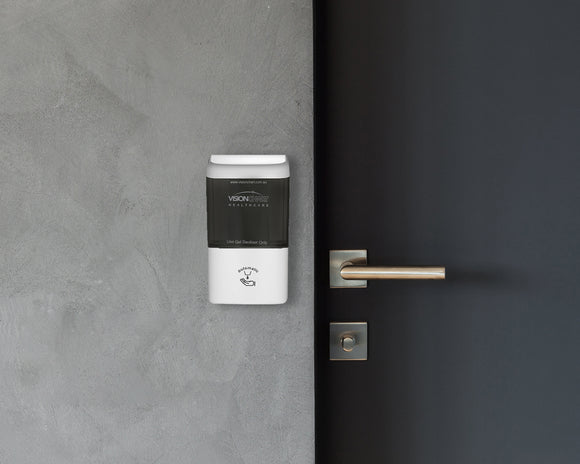
In today’s world, hygiene and safety are paramount. The global pandemic has heightened our awareness of germs and the importance of frequent hand sanitisation. Auto sanitiser spray stations offer a convenient, touch-free solution for promoting hygiene in high-traffic areas.
If you’re looking to improve hygiene in and around your home or workplace, keep reading to learn more. Here we delve into the world of auto sanitiser spray stations, exploring their benefits, functionalities, considerations for choosing the right station, and their impact on public health.
The Advantages of Auto Sanitiser Spray Stations
Auto Sanitiser Spray Station offers a convenient, touch-free solution for promoting hygiene in high-traffic areas. They boast several advantages over traditional hand sanitiser dispensers:
Touch-Free Operation: These stations eliminate the need to touch a dispenser, minimising the spread of germs through contact surfaces. This is particularly beneficial in environments like healthcare facilities, schools, and public transportation hubs.
Improved Hygiene: By promoting frequent hand sanitisation, these stations can significantly reduce the spread of bacteria and viruses. This is crucial in preventing the transmission of illnesses like the common cold, flu, and even more serious infections.
Convenience and Efficiency: Auto sanitiser spray stations are easy to use and dispense a pre-measured amount of sanitiser, ensuring consistent application and minimising waste.
Reduced Maintenance: Compared to pump dispensers, auto spray stations require less frequent refilling, reducing maintenance needs.
Multiple Applications: Some stations can be used with various sanitising solutions, offering versatility for specific needs.
Promotes a Culture of Hygiene: The visible presence of auto sanitiser spray stations reinforces the importance of hand hygiene, encouraging healthy practices.
Understanding Functionality
Auto sanitiser spray stations operate through a combination of sensors and dispensing mechanisms. Here’s a breakdown of their key components:
Motion Sensors: Infrared or ultrasonic sensors detect hand movement beneath the dispenser, triggering the release of sanitiser spray.
Dispensing Mechanism: This mechanism typically uses a small pump or pressurised air to deliver a precise amount of sanitiser.
Refill Container: The station holds a refillable container for the sanitiser solution.
Power Source: These stations can be powered by batteries or an electrical connection.
Optional Features: Some stations may include LED lights to indicate functionality, adjustable spray volume settings, and audible alerts for low sanitiser levels.

Choosing the Right Auto Sanitiser Spray Station
Selecting the right auto sanitiser spray station requires careful consideration. Here are some key factors to ponder:
Placement: Choose a location with high foot traffic, such as entrances, exits, hallways, and common areas. Consider accessibility for all users.
Traffic Volume: Stations with larger refill capacities are ideal for high-traffic areas to minimise refill frequency.
Power Source: Battery-powered stations offer portability, while AC-powered stations provide continuous operation. Consider the availability of outlets at the chosen location.
Sanitiser Compatibility: Ensure the station is compatible with your preferred sanitiser solution, whether liquid, gel, or foam.
Durability and Maintenance: Opt for stations made with sturdy, easy-to-clean materials that can withstand frequent use. Choose a design with easy refill access.
Additional Features: Consider features like adjustable spray volume, low-level alerts, and visual indicators for added convenience and efficiency.
The Impact on Public Health
Auto sanitiser spray stations play a significant role in promoting public health. They encourage frequent hand hygiene, a crucial practice in preventing the spread of infectious diseases.
In healthcare facilities, these stations can help reduce hospital-acquired infections (HAIs), protecting patients and healthcare workers. In schools and daycare centers, they can contribute to a healthier environment for children, who are more susceptible to germs.
Public transportation hubs, offices, and retail spaces can benefit from these stations by promoting hygiene among staff and customers, ultimately creating a safer environment for everyone.
The Future of Auto Sanitiser Spray Stations
The demand for auto sanitiser spray stations is likely to continue as the focus on hygiene remains a priority. Advancements in technology may bring about even more sophisticated features, such as:
Integrated Hand Sanitiser Dispensers and Thermometers: Combining hand sanitisation with temperature checks could offer a more comprehensive health screening solution in high-risk environments.
Biometric Authentication Dispensers: These stations could potentially use fingerprint or facial recognition technology to dispense sanitizer for authorised personnel in restricted areas.
Data-Collecting Stations: Stations with built-in sensors might track usage patterns, allowing for better resource allocation and maintenance scheduling.
As technology evolves, auto sanitiser spray stations will continue to play an essential role in safeguarding public health and promoting a culture of hygiene in various settings. By implementing these user-friendly, touch-free systems, we can create cleaner and healthier environments for everyone.

No Comments